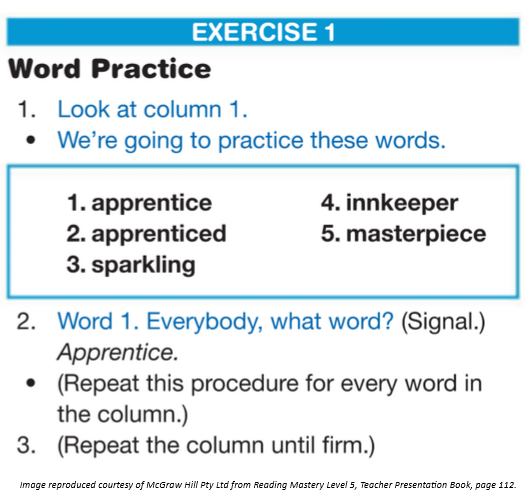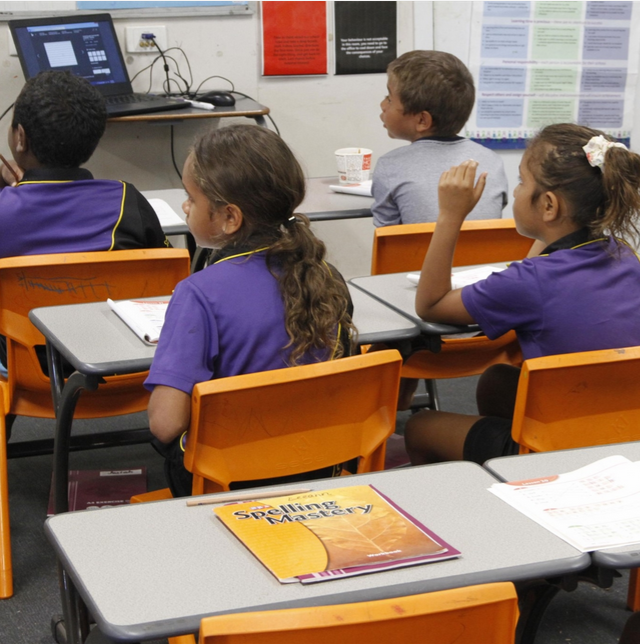Practice Use Signals
-
Module introduction2 Topics
-
Delivered With Fidelity26 Topics|2 Tests
-
Cover
-
Module Objective
-
What Happens when the Technique is Delivered with Fidelity
-
Parts of a Signal
-
Parts of a Signal Continued
-
Video: Parts of a Signal
-
Types of Signals and when they are Used
-
Video: Hand-drop Signal
-
Video: Auditory Signal
-
Video: Point-touch Signal
-
Video: Point-touch Slide Signal
-
Video: Fingers signal
-
Video: Digits Signal
-
Video: Looping Signal
-
Attention Signal
-
Using Signals Effectively
-
Allows the Teacher to Check for Mastery
-
Allows the Teacher to Check for Mastery
-
Allows Students to Actively Engage in the Lesson
-
Allows Students to Actively Engage in the Lesson
-
Video: Allows Students to Actively Engage in the Lesson
-
Provides Students with Valuable Practice
-
Provides Students with Valuable Practice
-
Check your understanding
-
Test your understanding
-
Lesson Completed
-
Cover
-
Not Delivered With Fidelity14 Topics|2 Tests
-
Cover
-
What happens when Technique is not Delivered with Fidelity
-
Not using Signals Effectively
-
Video: Not using Signals Effectively
-
Doesn’t Allow the Teacher to Check for Mastery
-
Doesn’t Allow the Teacher to Check for Mastery
-
Students do not Actively Participate in the Lesson
-
Students do not actively Participate in the Lesson
-
Video: Teacher Demonstrating Error when Signalling
-
Students do not get Adequate Practice and Confidence Drops
-
Students do not get Adequate Practice and Confidence Drops
-
Check your understanding
-
Test your understanding
-
Lesson Completed
-
Cover
-
Barriers That Impede Fidelity9 Topics|2 Tests
-
Cover
-
Barriers that Impede Delivery of the Technique with Fidelity
-
Using Deductive Logic to Identify the Cause of the Barrier
-
Not Understanding why Using Signals Effectively is Required
-
Not Understanding How to Use Signals Effectively
-
Unfamiliar with Lesson Content
-
Check your understanding
-
Test your understanding
-
Lesson Completed
-
Cover
-
Removing Barriers That Impede Fidelity12 Topics|2 Tests
-
Cover
-
Ways to Tackle Barriers so Technique is Delivered with Fidelity
-
Understand why Using Signals Effectively is Required
-
The Process
-
Learn how to Use Signals Effectively
-
The Process
-
Become Familiar with Lesson Content
-
The Process
-
Video: Practice Makes Signalling Perfect
-
Check your understanding
-
Test your understanding
-
Lesson Completed
-
Cover
-
Module evaluation survey1 Topic
Participants 521
Allows Students to Actively Engage in the Lesson
ddewell@goodtogreatschools.org.au August 7, 2023

Allows Students to Actively Engage in the Lesson
At the beginning of a Year 5 reading lesson, Sarah (teacher) uses an ‘auditory signal’ to practice words with students. Sarah gives the instruction, “Look at ‘column one’. We’re going to practice these words”. Sarah gives an appropriate amount of ‘think-time’ and then says, “Word ‘one’. Everybody, what word?” She pauses and snaps her fingers. The students provide their individual response in chorus, “apprentice”. Sarah ensures that all students are answering on the signal. She repeats the process for every word in the column and and repeats the column until firm. All students are engaged in the exercise and provide their responses at the appropriate time.

Matthew (teacher) is having his Year 1 Oz-e-Science class work through a ‘pair-share activity’. The students name one living thing that lives in the ocean habitat. At the end of the activity, Matthew uses a ‘call-and-response signal’ to gain the students’ attention and ensure they are paying attention to him. He says, “One, two, eyes on you”, and then moves on to teaching the students about how the ocean meets the needs of living things.


